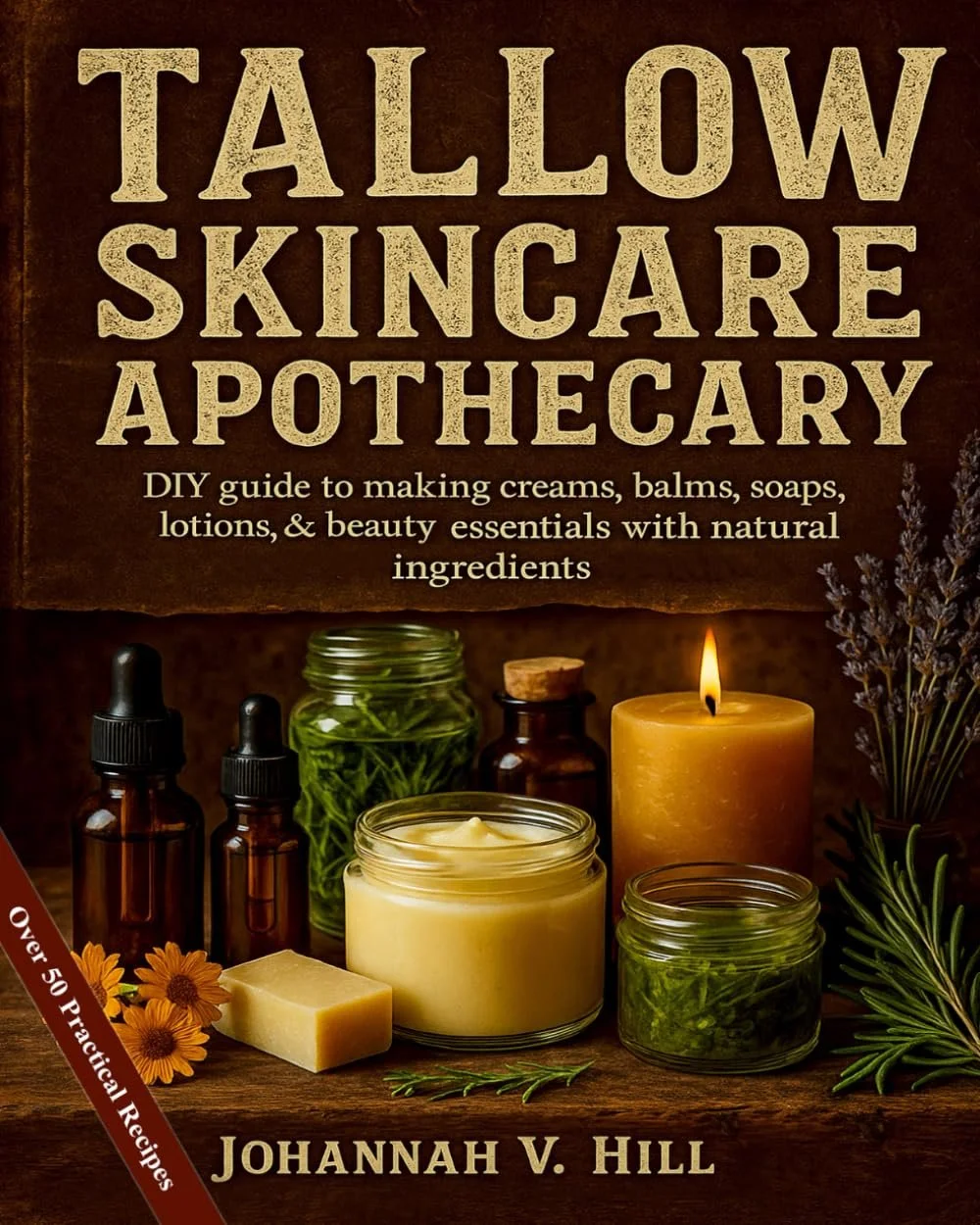Rendering Tallow
How to Render Pure and Odorless Deer Tallow Using a Crock Pot
We try very hard in our family to waste very little of the food we produce. We hunt every year, and when the kids were younger, it was all we could do just to butcher the meat. Now that they are getting older and more independent, we can spend more time trying to use everything we can. Which brings me to today’s topic. Tallow. For a long time now, I have heard about the benefits of using tallow, and I am happy to report that we were finally able to render our own from the elk and deer we hunted last year and have been using it in a wide array of ways ever since. Tallow is a versatile fat that can be used for cooking, soap-making, or even as a natural skincare ingredient. Rendering deer tallow to make it pure and odorless can seem daunting, but with a crock pot, the process becomes straightforward and relatively hands-off. Here's a step-by-step guide to help you render high-quality deer tallow at home.
Disclaimer: I use affiliate links which means I may make a commission from products I suggest at no additional cost to you. I only promote products I use and trust and feel you will love as well.
What You'll Need
Deer, elk, or beef fat (trimmed of meat and connective tissue)
A crockpot
Knife and cutting board
Cheesecloth or a fine-mesh strainer
Large bowl or jar for straining
Water (optional)
Baking soda (optional, for odor neutralization)
Step 1: Preparing the Fat
Trim the Fat: Use a sharp knife to remove as much meat, sinew, and connective tissue as possible from the deer fat. These impurities can cause the rendered tallow to have a strong odor or discoloration.
Cut into Small Pieces: Chop the fat into small chunks. The smaller the pieces, the faster and more evenly they will render. Alternatively, you can pulse the fat in a food processor for a finer texture.
Optional Pre-Soak: If you’re aiming for a particularly clean and neutral-smelling tallow, soak the fat pieces in cold water overnight. Add a teaspoon of baking soda to the water for extra odor neutralization. Change the water a few times to remove blood and impurities.
Step 2: Rendering the Tallow
Load the Crock Pot: Place the prepared fat into the crock pot. Do not overfill; leave room for the fat to melt and release its liquid.
Optional: Add Water: For an initial "wet rendering" method, add about 1 cup of water to the crock pot. This helps prevent the fat from burning during the early stages of rendering.
Set the Temperature: Turn the crock pot to the low setting. Rendering should be done slowly to avoid burning or developing off-flavors.
Render: Allow the fat to melt slowly over several hours (4-6 hours is typical). Stir occasionally to ensure even melting and to prevent sticking.
Skim Impurities: As the fat melts, impurities and solids (called cracklings) will separate. Skim off these solids with a slotted spoon or ladle.
Step 3: Straining and Storing
Prepare the Strainer: Line a large bowl or jar with several layers of cheesecloth or use a fine-mesh strainer.
Strain the Fat: Carefully pour the liquid fat through the cheesecloth or strainer to remove any remaining impurities. Be cautious as the fat will be very hot.
Cool and Store: Let the strained fat cool to room temperature, then transfer it to jars or containers for storage. Once cooled, the tallow will solidify into a creamy, white substance. Store it in the refrigerator or freezer for long-term use.
Tips for Odorless Tallow
Wet Rendering Method: Adding water during rendering can help remove impurities and reduce odor. The water will evaporate by the end of the process or can be drained off.
Low and Slow: Always render at a low temperature to prevent scorching, which can create unpleasant odors and flavors.
Baking Soda Soak: For particularly gamey fat, a pre-soak in baking soda water can help neutralize odors.
Uses for Deer Tallow
Once rendered, deer tallow can be used in many ways:
Cooking: Use as a cooking fat for frying or roasting.
Soap-Making: Combine with lye and other oils for natural, handmade soap.
Skincare: Blend with essential oils for a nourishing balm or moisturizer.
Candles: Create natural candles by mixing tallow with beeswax.
This book is filled with excellent tallow recipies to care for your skin and more. Check it out here.
This book outlines many ways to use tallow to support your body’s wellbeing. Take a look here!
Rendering deer tallow in a crock pot is an easy, efficient way to make the most of your harvest. With a little time and care, you can produce a clean, versatile fat that will serve you well in countless applications. Happy rendering!


